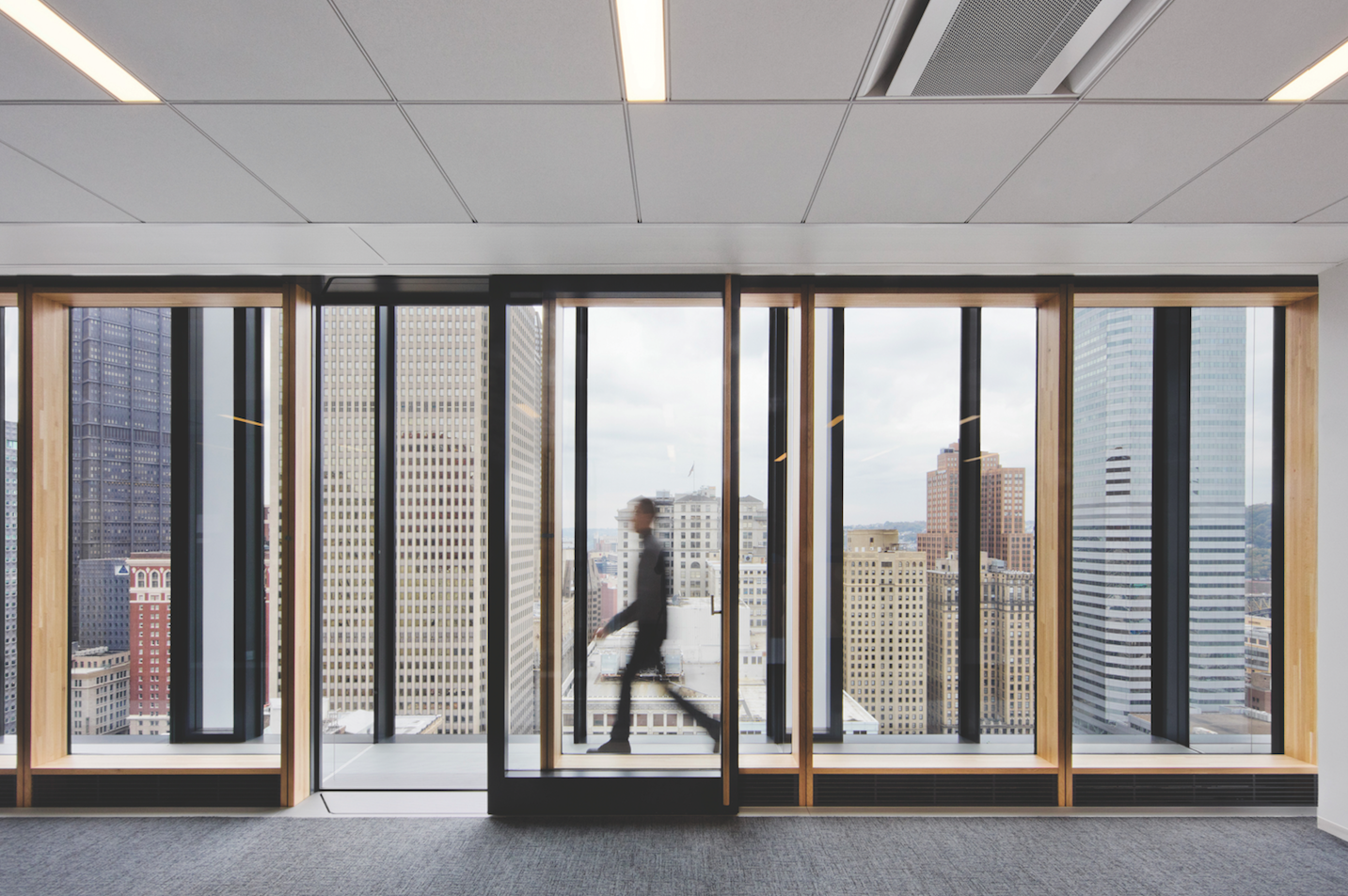In 2009, PNC Financial Services Group, the nation’s seventh-largest bank, approached the architectural firm Gensler with its vision for a new headquarters in Pittsburgh. PNC’s idea rested on three strategic pillars: to be a community builder that supports sustainable urban growth; a workplace innovator that attracts the best talent by creating a collaborative and healthy work environment; and an energy responder that maximizes renewable energy opportunities.
The result is the Tower at PNC Plaza, a 33-story, 800,000-sf office building for 22,000 employees, which opened October 1, 2015. It is one of greenest high-rises to be constructed in the U.S. to date. The tower will use 50% less energy than a comparable building that meets ASHRAE’s 90.1-2007 benchmark, thanks in part to natural ventilation facilitated by a double-skin façade and a solar chimney running through the building’s core. Daylighting, managed by automated blinds within the interior façade, is available to 92% of the tower’s workspace. A water recycling and treatment system will reduce the building’s water consumption by 77%.
This LEED Platinum-certified tower deploys resource-saving components in a unique way, explains Douglas Gensler, AIA, NCARB, Principal and Managing Director at the firm’s Boston office. The project gave the Building Team “the opportunity to push the notion of what a building could be,” says Gensler.
 The Tower at PNC Plaza in Pittsburgh lays claim as one of the greenest office buildings in the U.S. Photo: Connie Zhou Photography
The Tower at PNC Plaza in Pittsburgh lays claim as one of the greenest office buildings in the U.S. Photo: Connie Zhou Photography
Before starting construction on the $400 million tower in the spring of 2012, members of the Building Team toured several innovative structures and buildings, including Manitoba Hydro’s headquarters in Winnipeg, Man. (which is naturally ventilated), The Bullitt Center in Seattle, KfW Bank in Frankfurt, Germany, the Department of Public Works in San Francisco, and the Helmut Jahn-designed Post Tower in Bonn, Germany (which features a mechanical blinds system).
“Without the tours, [our] building doesn’t happen,” says Hao Ko, AIA, LEED AP, Gensler’s Project Design Director for the PNC tower.
Buro Happold, which provided structural and MEP services as well as computational modeling and analysis, built a replica of the solar chimney on the roof of another PNC building, and connected it to the building management system for a year before the Tower at PNC Plaza got started, says Denzil Gallagher, CEng, Principal based in Buro Happold’s New York office.
The team also built a 35x35-foot mockup of a corner of an office within the tower to test the façade and blinds systems, the lighting and flooring, the sequencing of controls, and even the furniture.
“What we discovered is that when you think holistically, things that you thought weren’t possible become possible,” says Benedict Tranel, AIA, Principal in Gensler’s San Francisco office, and a BD+C 40 Under 40 honoree (Class of 2014).
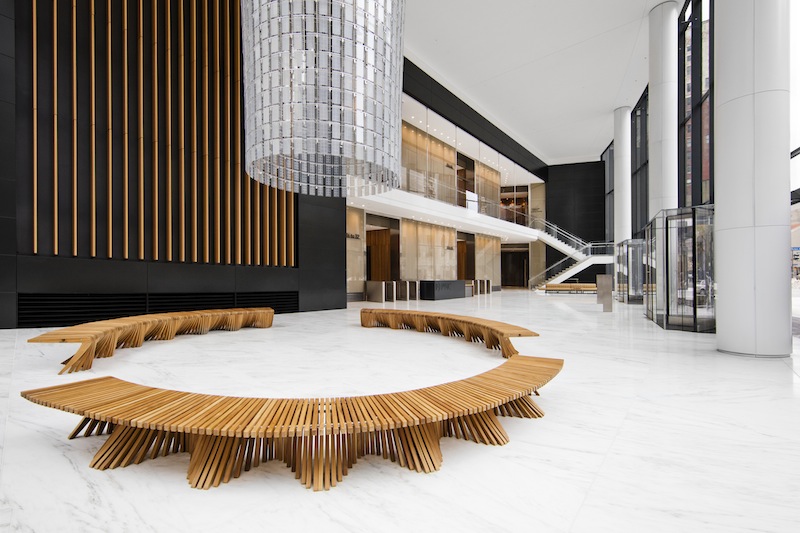 Photo: Connie Zhou Photography
Photo: Connie Zhou Photography
A key to the tower’s energy efficiency is its double-skin façade. The exterior wall features air gates—called “poppers”—that open automatically to vent the 36-inch façade cavity and let outside air into the building. The interior wall has automated louvers—called “floppers”—for natural ventilation, and manually operated wood sliding doors that allow occupants to step onto a “porch” between the interior and exterior walls for fresh air on any floor.
Air circulates through the building via the solar chimney, a vertical shaft with a rooftop solar collection panel that creates an updraft that draws cool outside air through the skin, across the interior space, and up and out of the building without fans or pumps. Gensler estimates that this tower can be ventilated naturally for 42% of the year.
Visitors entering the building’s lobby are greeted by the Beacon, a 30-foot tower designed by ESI Design, which interacts with the building’s sensors to collect performance data like energy use, water consumption, even when a window is open. The Beacon’s LED panels provide continuous real-time visual readouts of that information.
P.J. Dick was the GC on the project. Paladino & Company was the sustainability consultant.
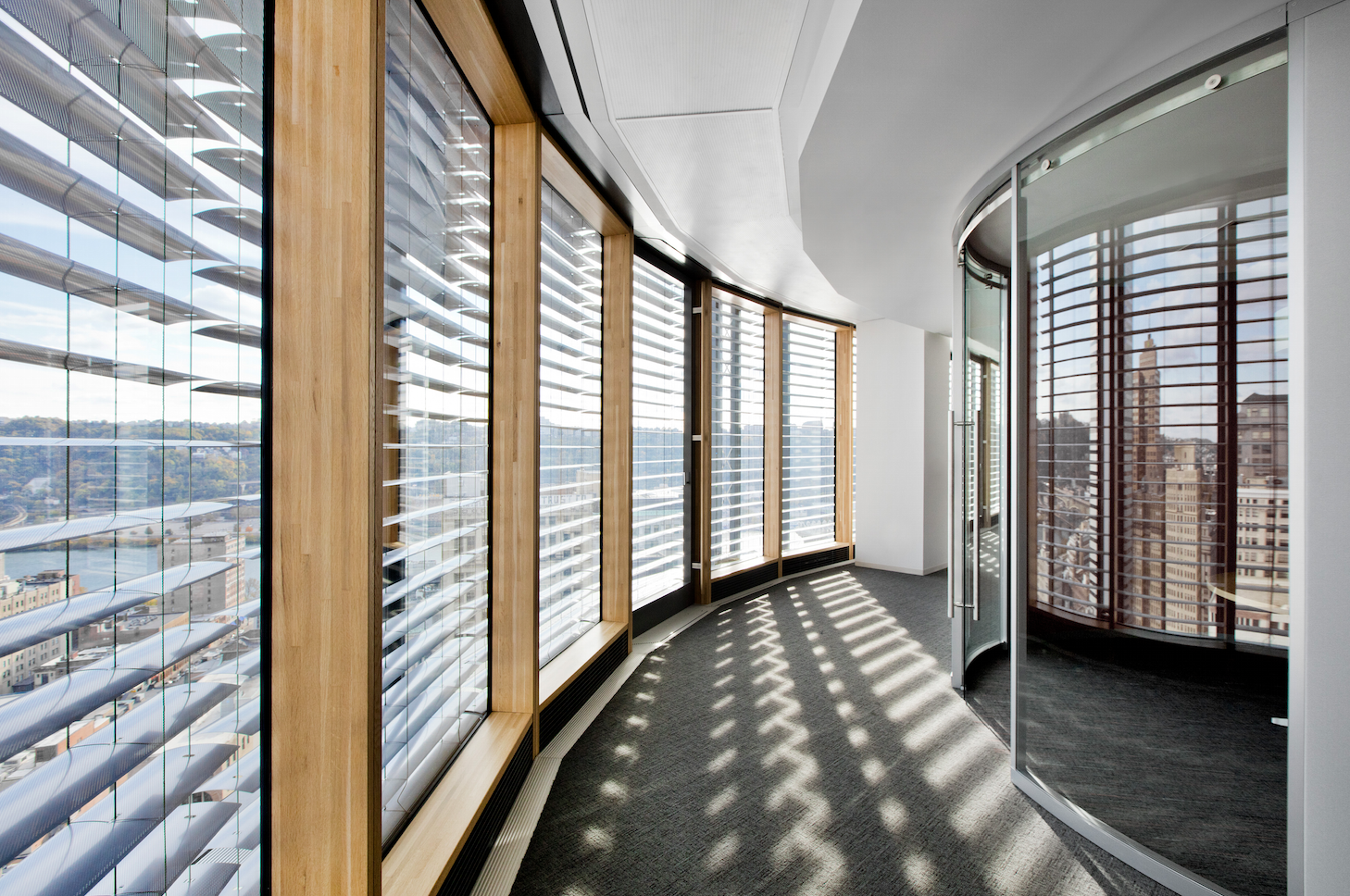 Photo: courtesy Gensler
Photo: courtesy Gensler
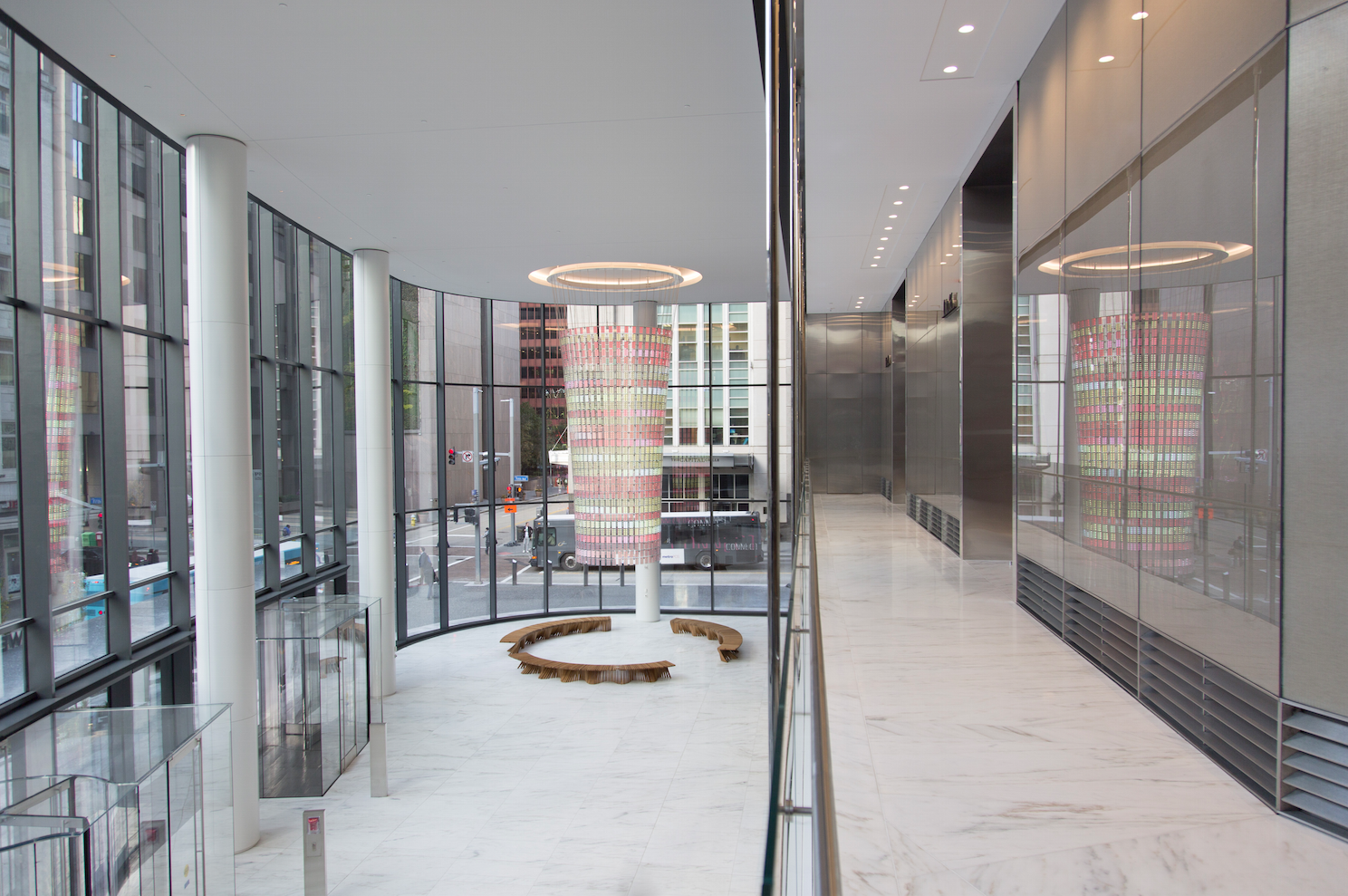 Photo: courtesy Gensler
Photo: courtesy Gensler

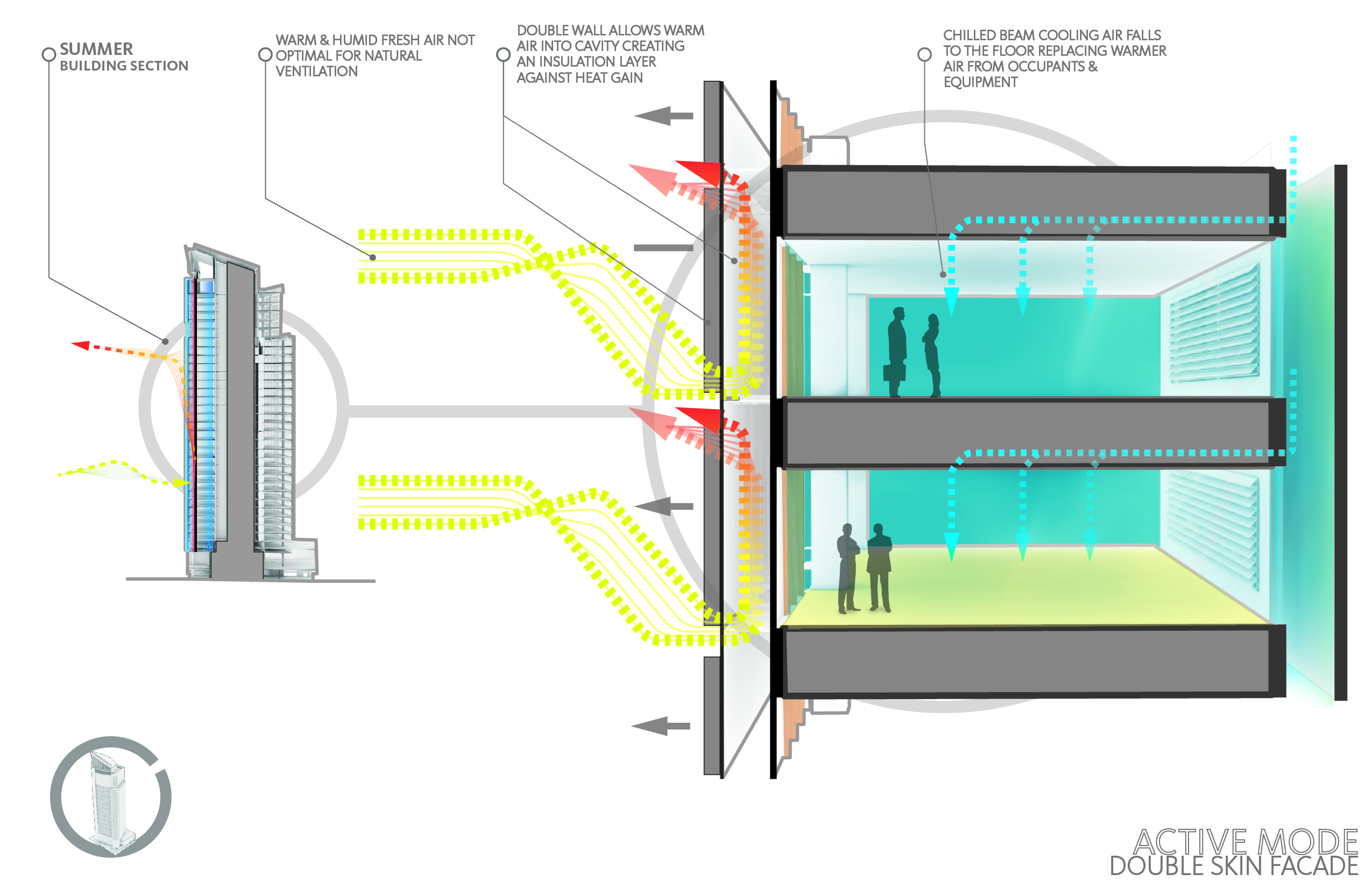 Courtesy Gensler
Courtesy Gensler
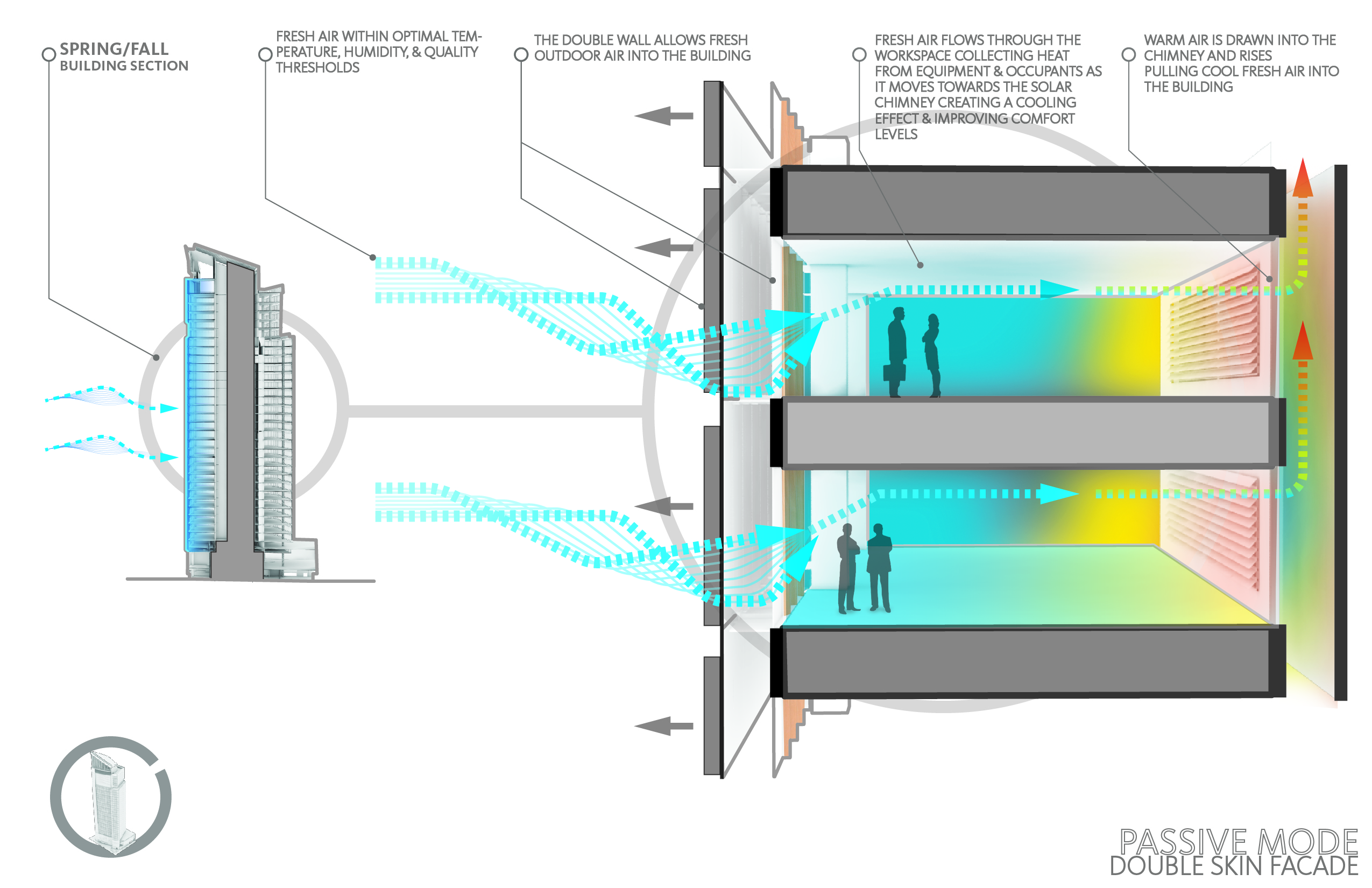 Courtesy Gensler
Courtesy Gensler
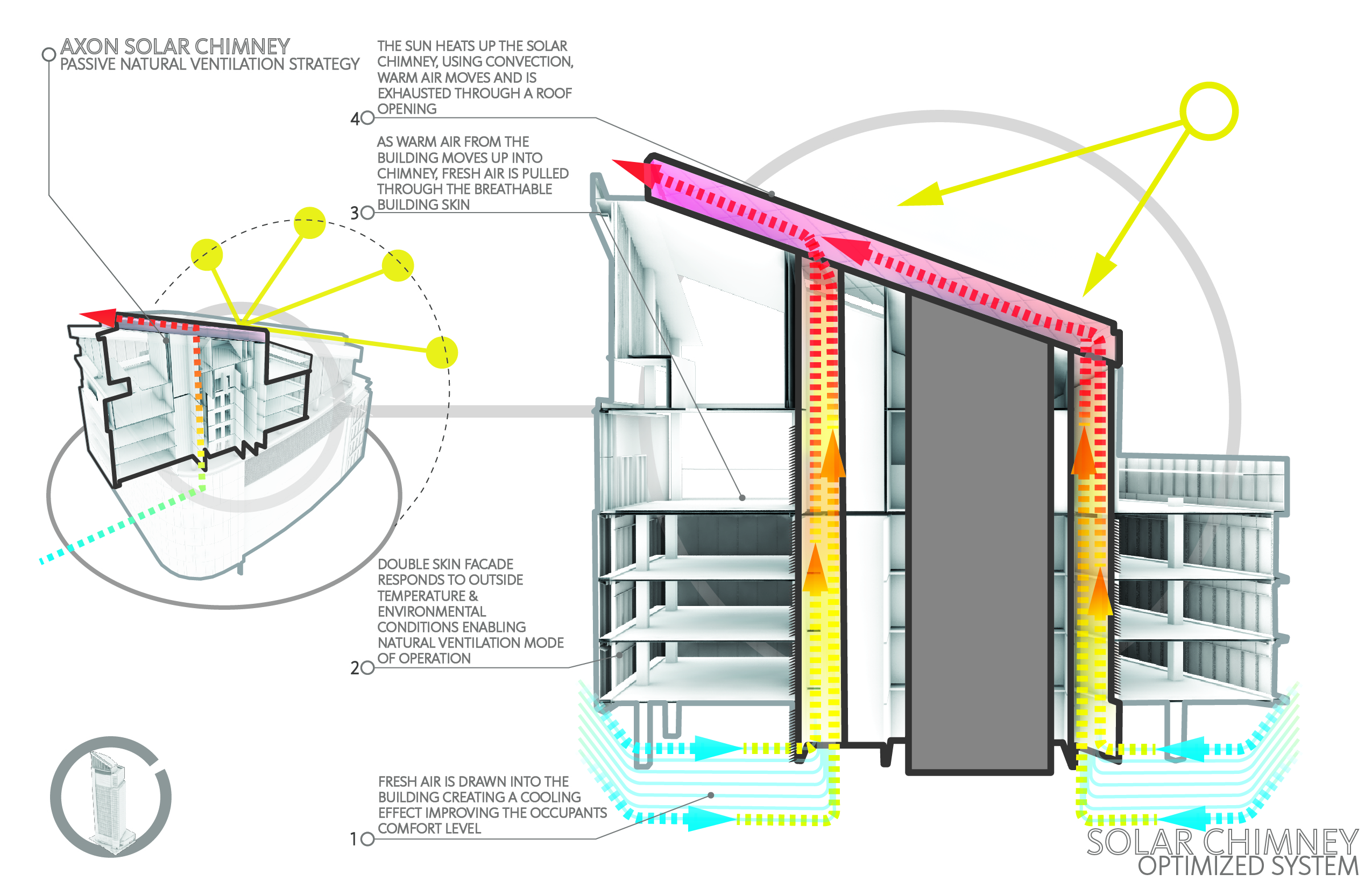 Courtesy Gensler
Courtesy Gensler
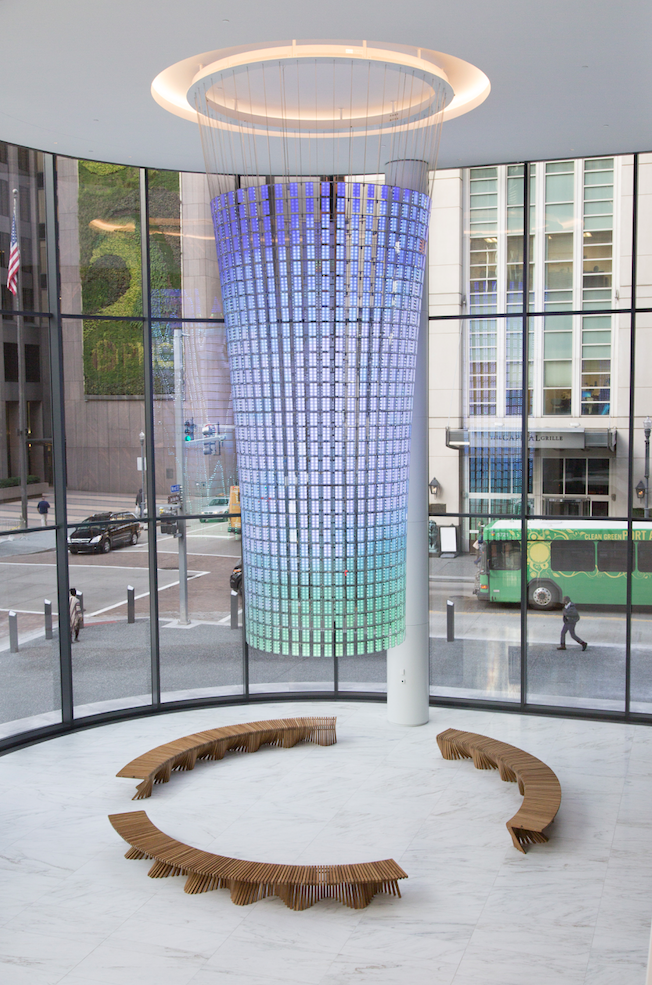 Photo: courtesy Gensler
Photo: courtesy Gensler
 Photo: Connie Zhou Photography
Photo: Connie Zhou Photography
Related Stories
AEC Tech | Feb 20, 2024
AI for construction: What kind of tool can artificial intelligence become for AEC teams?
Avoiding the hype and gathering good data are half the battle toward making artificial intelligence tools useful for performing design, operational, and jobsite tasks.
AEC Innovators | Jun 15, 2023
Rogers-O'Brien Construction pilots wearables to reduce heat-related injuries on jobsites
Rogers-O'Brien Construction (RO) has launched a pilot program utilizing SafeGuard, a safety-as-a-service platform for real-time health and safety risk assessment. Non-invasive wearables connected to SafeGuard continuously monitor personnel to prevent heat exhaustion on jobsites, reducing the risk of related injuries. RO is the first general contractor to pilot this program.
Office Buildings | May 15, 2023
Sixteen-story office tower will use 40% less energy than an average NYC office building
This month marks the completion of a new 16-story office tower that is being promoted as New York City’s most sustainable office structure. That boast is backed by an innovative HVAC system that features geothermal wells, dedicated outdoor air system (DOAS) units, radiant heating and cooling, and a sophisticated control system to ensure that the elements work optimally together.
K-12 Schools | May 12, 2023
In Virginia, a new high school building helps reimagine the experience for 1,600 students
In Virginia, the City of Alexandria recently celebrated the topping out of a new building for Alexandria City High School. When complete in 2025, the high-performance structure will accommodate 1,600 students.
Hotel Facilities | May 9, 2023
A new camping destination near Utah’s Zion National Park offers a variety of all-season lodgings and amenities
Outdoor lodging brand AutoCamp has opened a new camping destination near Utah’s Zion National Park. A 16-acre property, AutoCamp Zion is located between the Virgin River and the desert of Southern Utah.
Concrete Technology | Apr 24, 2023
A housing complex outside Paris is touted as the world’s first fully recycled concrete building
Outside Paris, Holcim, a Swiss-based provider of innovative and sustainable building solutions, and Seqens, a social housing provider in France, are partnering to build Recygénie—a 220-unit housing complex, including 70 social housing units. Holcim is calling the project the world’s first fully recycled concrete building.
Design Innovation Report | Apr 19, 2023
Reinforced concrete walls and fins stiffen and shade the National Bank of Kuwait skyscraper
When the National Bank of Kuwait first conceived its new headquarters more than a decade ago, it wanted to make a statement about passive design with a soaring tower that could withstand the extreme heat of Kuwait City, the country’s desert capital.
Design Innovation Report | Apr 19, 2023
HDR uses artificial intelligence tools to help design a vital health clinic in India
Architects from HDR worked pro bono with iKure, a technology-centric healthcare provider, to build a healthcare clinic in rural India.
Urban Planning | Apr 12, 2023
Watch: Trends in urban design for 2023, with James Corner Field Operations
Isabel Castilla, a Principal Designer with the landscape architecture firm James Corner Field Operations, discusses recent changes in clients' priorities about urban design, with a focus on her firm's recent projects.
3D Printing | Apr 11, 2023
University of Michigan’s DART Laboratory unveils Shell Wall—a concrete wall that’s lightweight and freeform 3D printed
The University of Michigan’s DART Laboratory has unveiled a new product called Shell Wall—which the organization describes as the first lightweight, freeform 3D printed and structurally reinforced concrete wall. The innovative product leverages DART Laboratory’s research and development on the use of 3D-printing technology to build structures that require less concrete.


